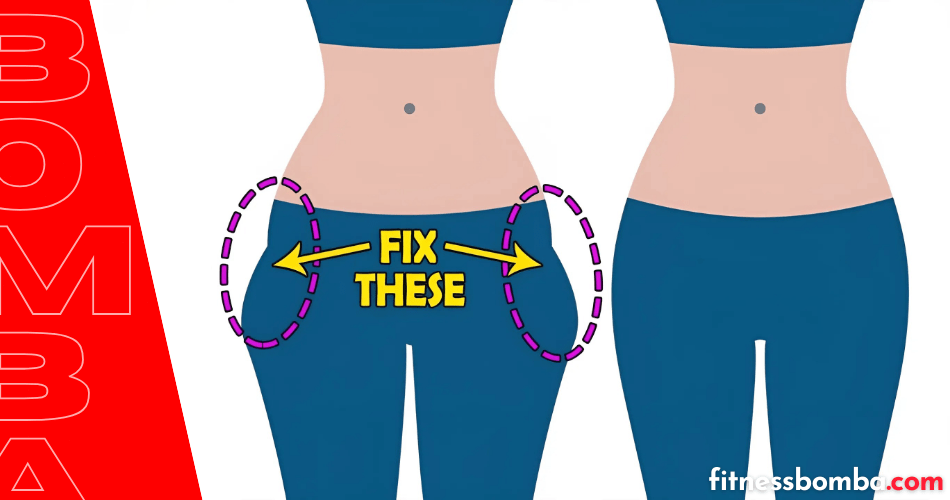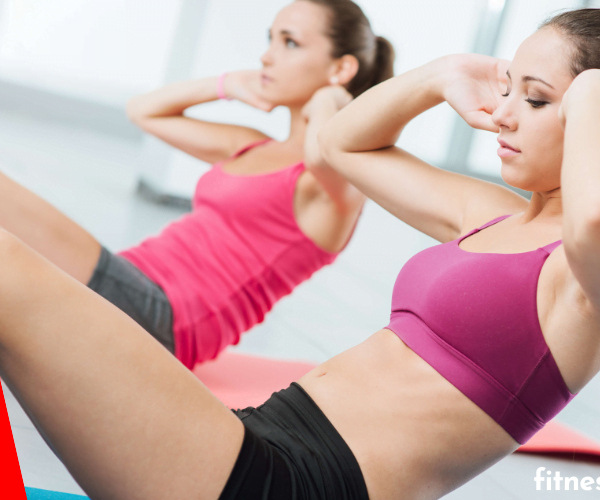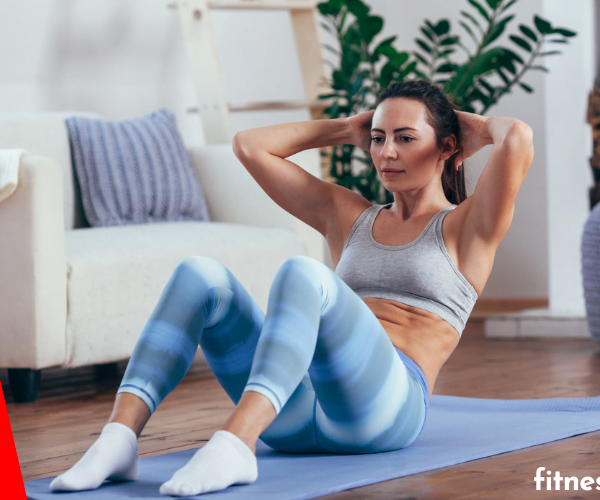Do you have violin hips?
The internet is suddenly obsessed with the gentle bulges below the hip — medically called trochanter depression.
It can be seen everywhere on social media. But what does that mean? Is it sexy? Are they a form of flexor? Defacement of the famous hourglass figure?
You’re not the only one looking for “hip dip exercises” or “how to get rid of hip dips” to try to meet beauty standards. So before you change your training program for the lower body or convulsively search for exercises for a larger butt, you should first take a deep breath.
You’ve come to the right place to get accurate advice.
What Are Hip Dips? What Causes Them?
Hip dents are naturally occurring, inward-facing bulges or indentations just below the hips, on the side of the body. Keyword: naturally occurring.
They are genetic and are caused by the shape of the pelvis (hip bone). As with the abdominal muscles, everyone has a hip dent, but it’s not seen in everyone some have a more pronounced hip dent than others.
But while abdominal muscles are not visible due to abdominal fat, hip cuffs are mostly invisible due to genetic bone structure and a little due to fat and muscle mass.

Are Hip Dips Bad or Normal?
Most people think that hip bends (or a lack of hip bends) are a sign of poor health either you’re too thick or too thin and have a bone deformity.
Neither is true. As we mentioned earlier, the indentation on the side of your hip is nothing more than a product of your bone structure something that can’t be changed, something completely normal.
While hip cuffs aren’t a direct sign of whether you’re healthy or unhealthy, if they’re not visible, it could mean you’ve stored more fat which is an indicator that you’re not in the best shape.
However, do not confuse this with bone structure.
Hip Dips vs Love Handles
Fat pads are located much higher on the body than hip cuffs. It is excess fat on the sides of the abdomen, sometimes referred to as a muffin top.
Unlike the dents on the side of the hip, love handles have nothing to do with the anatomy but are often due to excess body fat.
Is it Possible to Get Rid of Hip Dips?
Building muscle mass and breaking body fat can help minimize their appearance, but they won’t disappear completely as a result. This has to do with our genes. We have to come to terms with it and love our body image.
Whenever possible, you should focus on lower body exercises that appeal to multiple muscle groups (e.B. squats and lunges), as well as isolation exercises (such as hydrants or shells).
It’s important that you strengthen your entire lower body and not just your gluteal muscles. Fitness also goes beyond hip drops – don’t just turn your life around it.
How to Get Rid of Hip Dips
You don’t need a personal trainer and you don’t have to go to the gym to change your body.
The best hip dip exercises that train your hips, thighs, abdominal muscles, and gluteal muscles can be incorporated into your home training program to improve your strength in the lower body and soften your hip dips.
Just remember that no amount of exercise and muscle mass will completely get rid of the appearance of hip dips.
8 Hip Dip Exercises:
With that said, it may be worth trying these different exercises:
1. Squats:
Squats are a great exercise for hip swing and train the large hip and gluteal muscles, including the gluteus medius.
They are great because as a compound exercise for muscle distribution, they address multiple areas such as hip muscles, calves, knee tendons, and oblique muscles.
Stand with your feet hip-width apart and bend your knees to squat, this time with the knees above the toes and not beyond.
When you get up again, squeeze your glutes muscles while taking the weight from your heels.
2. Side curtsy lunges:
The next exercise is bent lunges. They are perfect for building strength and stability in the lower body.
As a stabilizing muscle, the gluteus medius is an important stabilizer during movements and training sessions. Unfortunately, it is not stressed during many squats or lunges, so its strengthening is often overlooked.
If you are standing with your feet hip-width apart, take a lunge backward and cross the leg you are using to perform the lunge on the opposite side. You are then in a deep kink situation.
When you return to the starting position, you enter with the heel of the front foot. Repeat this process.
3. Hip abduction:
In order for us to stand upright, walk comfortably and turn our legs, our hip reductions play an important role.
Hip induction exercises not only provide a firm and firm butt but can also prevent and treat hip and knee pain.
Lie on your side and place your upper arm in front of your chest to support your upper body.
Keep your center and upper body as calm and engaged as possible and lift your upper leg towards the sky.
Then lower yourself in a controlled manner and repeat the exercise.
4. Side lunges:
In the lateral lunges, balance, stability, and strength are trained. They train the inside and outside of the thighs and can even reduce the appearance of cellulite (subcutaneous fat that causes dents in the skin).
Unlike the normal forward or rotational movements of your body, you train the sideways leg lift of your body.
You can also hold a dumbbell in your hands to increase resistance.
Tense your body center as you stand on top of your mat. Then take a lunge to the side while keeping your back flat and stretching your buttocks backward.
Repeat the exercise by applying pressure with the heel of the foot you are using to perform the lunge.
5. Glute bridges:
Glute bridges are a great way to strengthen your core since it activates your stabilizer muscles and targets the buttock are resulting in more stoned ness.
It also helps with lower back and knee pain while building a stronger back. Explosive in nature, they can also help you train to sprint faster and jump higher.
- While lying on your back, bring your heels up the mat so they are a few inches away from your bum, with your knees pointing up.
- Spread your feet a little wider than shoulder-width, point your toes outward, and bend your knees so that you engage your abductors (side glutes).
- Push your pelvis up towards the ceiling as you keep your upper back on the floor, and the driving force of your movement will only come from the waist down.
- Squeeze your glutes once you reach the top and keep them engaged throughout the entire movement. Then lower and repeat.
6. Leg kickbacks with band or ankle weights:
Strengthen your glutes, knee tendons, and hips with Glute Kickback Lunges.
Exercises like these are great for improving range of motion, strengthening the center of the body and lower back, and tightening the gluteal muscles — especially with weights that increase intensity and explosiveness.
- Go on all fours on your mat. Stretch your left leg straight behind you.
- Swing your right leg in an arc-shaped movement behind and over your left leg.
- Then swing it backward with your left hip into a lateral position. Return to the center and repeat the exercise with the other leg.
7. Fire hydrants:
The next exercise is the fire hydrant, which includes all three movements and is therefore a good gluteal exercise.
It can give your gluteal muscles a firmer and more shaped appearance, improve posture, reduce susceptibility to injury, and reduce back and knee pain.
- Start on all fours on a tabletop, make sure your center is tense and your back stays straight.
- Hold the legs at a 90-degree angle and lift one leg until it is at hip level. Pull the leg with your knee up, and make sure your foot and knees form a line throughout the movement.
- Tense both gluteal muscles to ensure the hip remains square and centered.
- If you feel like your upper body is moving too much, easily move your hands to one side (the side of the leg set up) for more stability. Repeat.
8. Banded clamshell:
This type of exercise (which requires a light band of resistance) is especially effective for strengthening gluteus medius, a muscle at the bottom of the buttocks responsible for stabilizing your pelvis — where hip bumps develop.
With the help of shell exercises, you can balance the muscle exertion of the inside and outside of the thighs and pelvic floor.
- Lie on your side on the floor. Place your head on the arm that lies on the floor. At the beginning of the exercise, slowly move your hips to a 45-degree angle and your knees to a 90-degree angle.
- Leave the feet together while pushing the upper knee away from the lower knee.
- When you reach the highest point of movement, tense your glutes and abdominal muscles and return to the floor. Then repeat.
Putting It All Together: Simple Hip Dip Workout Routines
For those who prefer to design their own lower body workout (like us!), here are two simple hip dip area exercises you can do at home to shape your body.
For best results, strengthen your buttocks and leg muscles twice a week. By using some of the largest muscles of your lower body, you can develop some lean muscles that change your hip shape and overall body structure over time.



